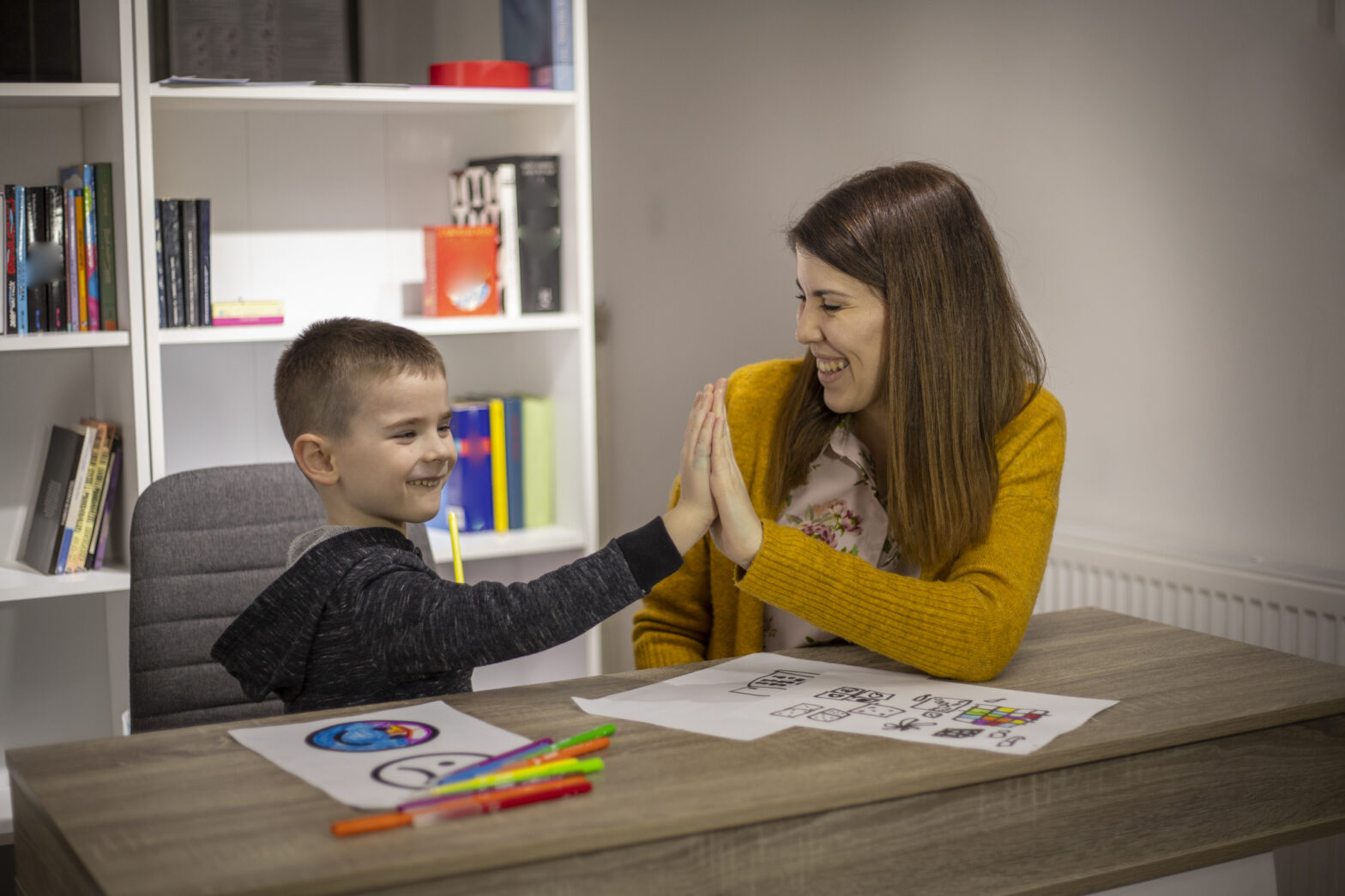Mindfulness Routines for Anxiety in Individuals With Autism

Many individuals on the autism spectrum experience heightened anxiety due to sensory sensitivities, social challenges, and difficulties with unexpected changes. A structured mindfulness routine for autism can provide a sense of predictability, helping to ease stress and reduce anxiety. When parents take an active role in these mindfulness practices, they not only support their child’s emotional well-being but also strengthen their bond and create a shared sense of calm.
The Connection Between Anxiety and Autism
Anxiety in autism spectrum disorders is common, with many individuals feeling overwhelmed by changes in routine, sensory overload, or social demands. Parents often witness how anxiety and autism go hand in hand, leading to meltdowns, avoidance behaviors, or difficulties in daily transitions. Since consistency is essential for individuals with autism and anxiety, integrating mindfulness techniques into a structured routine can provide a sense of stability and predictability, helping to ease daily stressors.
The Benefits of Mindfulness for Anxiety in Autism Spectrum
Mindfulness encourages individuals to focus on the present moment, fostering self-awareness and relaxation. For individuals with autism and anxiety, structured mindfulness exercises can:
- Improve emotional regulation
- Reduce feelings of overwhelm in stressful environments
- Enhance focus and concentration
- Increase tolerance for change by fostering resilience
However, the key to making mindfulness truly effective is parental involvement. When parents participate in mindfulness exercises, they model coping strategies, reinforce consistency, and create a supportive environment where the child feels safe and understood.
Steps to Creating a Mindfulness Routine for Autism
Developing a mindfulness routine for autism should be tailored to an individual’s unique needs and sensory preferences. Here’s how parents can integrate structured mindfulness into their child’s daily life:
Establish a Predictable Schedule
A consistent daily routine helps individuals with autism feel secure. To integrate mindfulness effectively:
- Choose a specific time for mindfulness activities, such as after breakfast, before bedtime, or after a stressful event.
- Use visual schedules or timers to indicate when mindfulness exercises will occur.
- Keep the routine simple and repeatable to encourage long-term engagement.
Start with Short, Engaging Activities
Individuals with anxiety in autism spectrum conditions may initially struggle with mindfulness if exercises are too lengthy. Parents can introduce short, engaging activities such as:
- Deep breathing exercises – Encourage your child to inhale for four counts, hold for four seconds, and exhale for four counts.
- Sensory grounding – Guide them through the 5-4-3-2-1 technique (five things you see, four things you touch, etc.).
- Body awareness movements – Gentle stretching or rocking to create a calming effect.
Use Visual and Sensory Supports
Many individuals with autism benefit from visual and tactile cues. Parents can enhance mindfulness exercises by incorporating:
- Visual timers or social stories to explain mindfulness concepts.
- Weighted blankets or fidget tools to provide comforting sensory input.
- Guided mindfulness videos or apps designed for individuals with autism and anxiety.
Introduce Mindfulness Through Special Interests
A mindfulness routine for autism is more effective when linked to an individual’s passions. Parents can encourage mindfulness by integrating activities related to their child’s interests. For example:
- If your child loves nature, try mindful walks where they focus on different textures, sounds, and sights.
- If they enjoy music, use calming melodies to guide breathing exercises.
- If they prefer hands-on activities, introduce mindfulness through playdough meditation or finger tracing.
Create a Calming Mindfulness Space
A dedicated space for mindfulness activities reinforces consistency. Parents can help by setting up an area that is:
- Free from loud noises and distractions
- Equipped with comforting items like soft lighting, weighted lap pads, or sensory-friendly seating
- Stocked with visual cues (such as picture cards) to guide mindfulness exercises
Model and Practice Mindfulness Together
For individuals with anxiety and autism, seeing a parent practice mindfulness can increase their willingness to participate. Parents who model mindfulness help their child learn self-regulation techniques in a low-pressure, supportive setting.
- Take deep breaths together before a transition.
- Narrate your own mindfulness strategies aloud (e.g., “I feel a little stressed, so I’m going to take three deep breaths to calm down.”).
- Create mindfulness moments throughout the day, such as pausing to notice the warmth of the sun or the sound of birds chirping.
How ABA Therapy Supports Mindfulness Routines
Applied Behavior Analysis (ABA) therapy focuses on building adaptive skills, and mindfulness can be incorporated into these interventions. ABA therapists can:
- Use reinforcement strategies to encourage mindfulness participation.
- Teach coping mechanisms for anxiety in autism spectrum conditions.
- Help parents create structured mindfulness routines tailored to their child’s needs.
By working with ABA professionals, parents can learn how to make mindfulness a natural and effective part of their child’s daily routine.
Find Support For Mindfulness Routines at Empower Behavioral Health
At Empower Behavioral Health, we recognize the power of mindfulness routines in reducing anxiety for individuals with autism. Our ABA therapy services are designed to create structured, calming routines that foster emotional regulation and consistency. By involving parents and caregivers, we ensure a collaborative approach to support your child’s progress and well-being.
Contact Empower Behavioral Health today to learn how our personalized strategies can help reduce anxiety and enhance growth for individuals on the autism spectrum.

